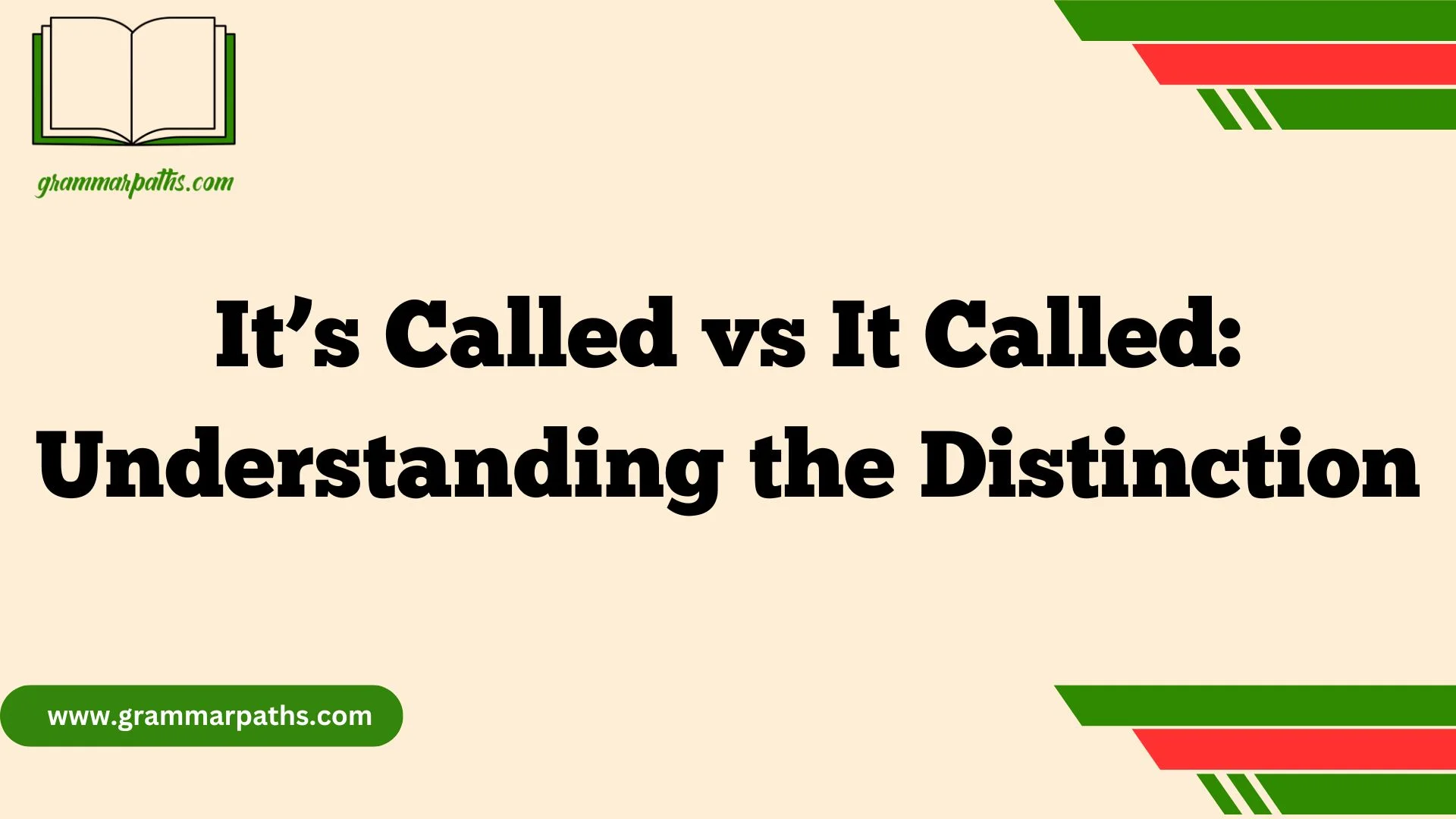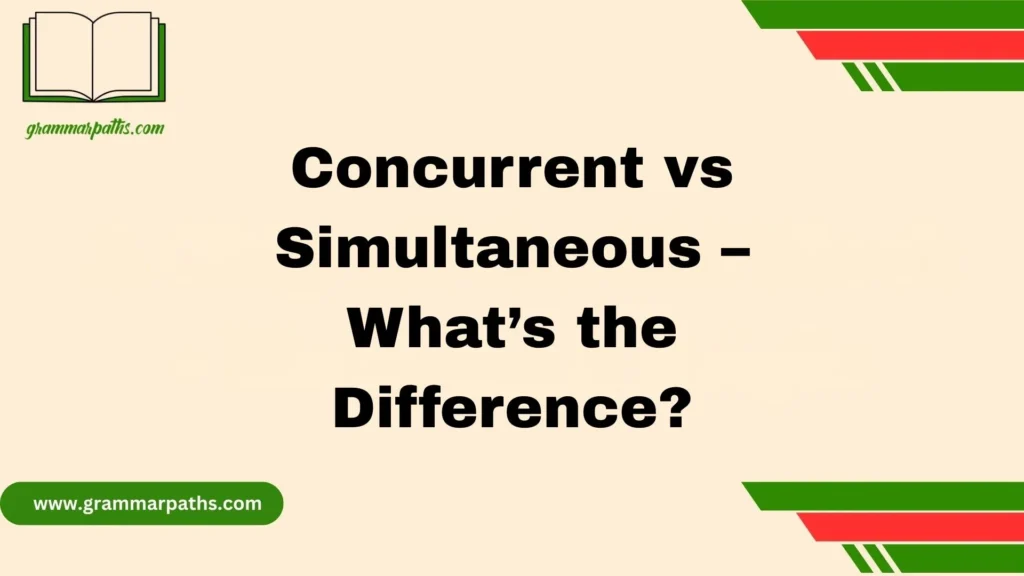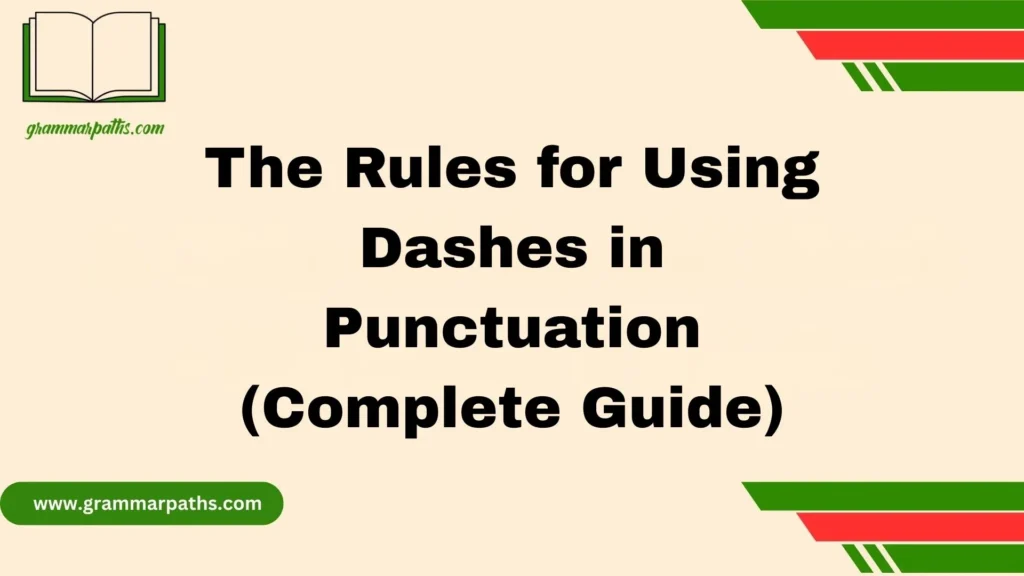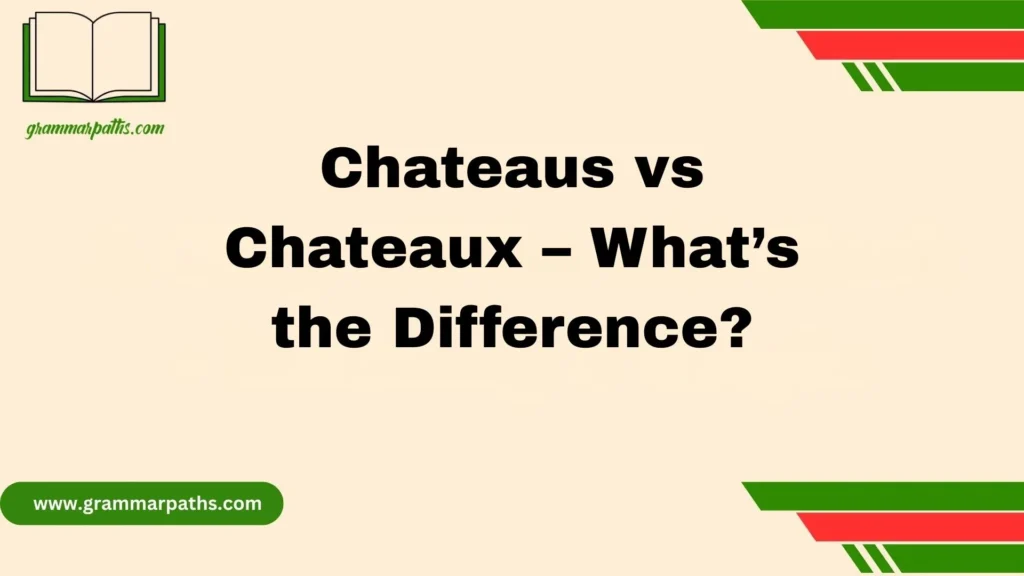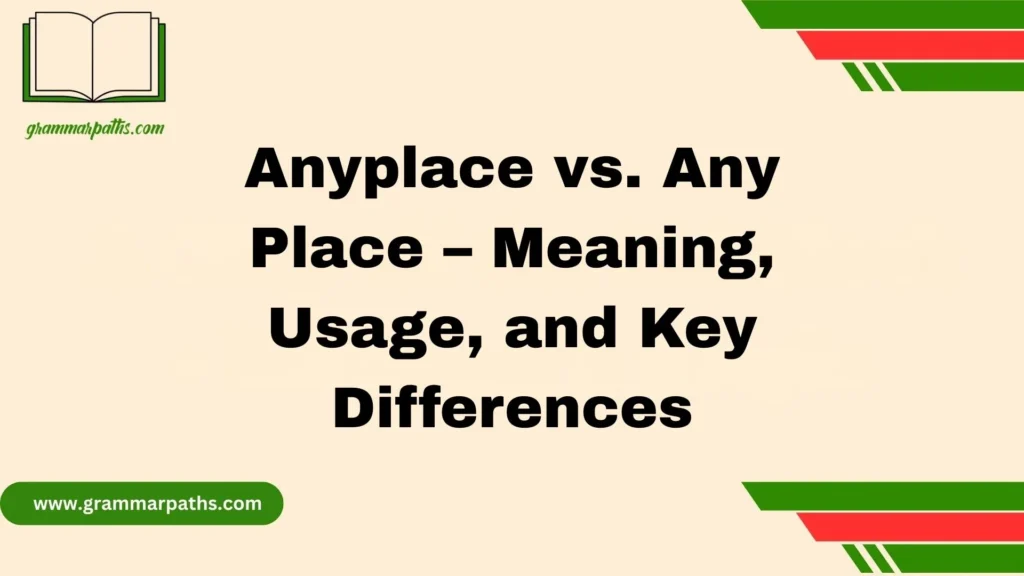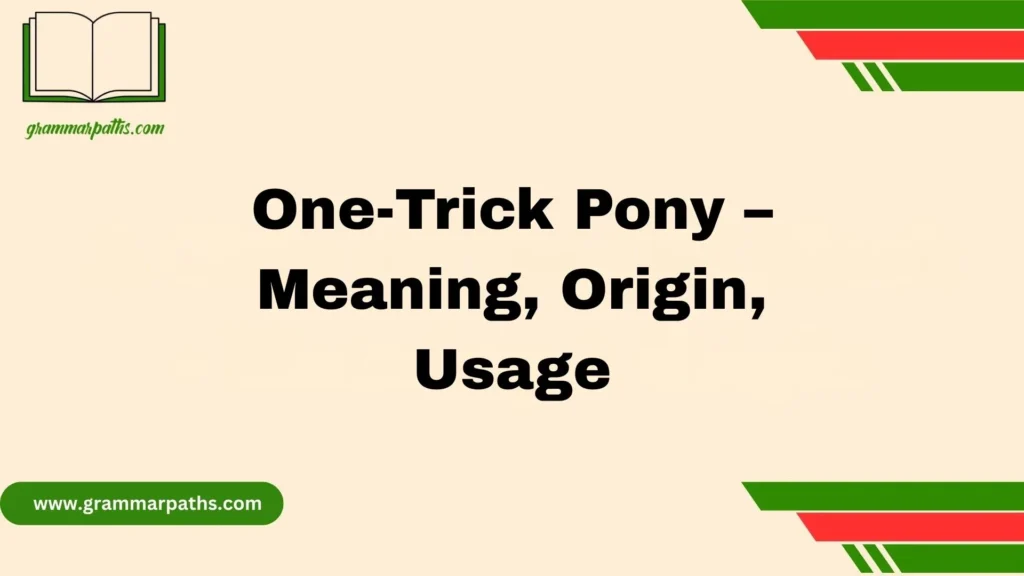Understanding the difference between “It’s called” vs “It called” is essential for anyone striving for clarity and accuracy in English communication. At first glance, the two phrases appear similar, but they serve very different grammatical functions and meanings. The contraction “It’s” stands for “It is” or “It has,” making “It’s called” a passive construction used to name or describe something. On the other hand, “It called” is a simple past tense sentence where “it” is the subject and “called” is the past tense of the verb “call.”
In daily use, these phrases can easily be confused, especially by ESL learners or anyone unfamiliar with English grammar rules. However, mastering the subtle distinctions between them can significantly improve both spoken and written communication. Whether you’re writing essays, engaging in conversation, or simply trying to avoid common grammar mistakes, recognizing when to use “It’s called” vs “It called” is key.
This article will explore the grammatical structure, usage context, and common examples of each phrase. By the end, you’ll have a solid grasp of how and when to use each correctly, enhancing your overall English language fluency.
What’s the Difference Between “It’s Called” and “It Called”?
Let’s begin with a foundational understanding:
| Phrase | Grammatical Form | Usage Context | Meaning |
| It’s called | Contraction of it is called (passive voice) | Naming, identifying, labeling something | Something has a name or title |
| It called | Past tense of to call (active voice) | Action done in the past by “it” | “It” performed an act of calling |
Key Concepts:
- “It’s called” uses a contraction (“it is”) and the past participle “called.” It’s used to describe what something is named.
- “It called” is past tense, indicating that “it” did the action of calling.
While the two sound similar, using the wrong one can change the meaning entirely—or result in a grammatically incorrect sentence.
Understanding “It’s Called” – Meaning and Usage
The phrase “it’s called” is a grammatical structure where:
- “It’s” = It is (contraction)
- “Called” = past participle of “call”
- Combined, they create a passive voice construction
This structure is incredibly common in definitions, introductions, and labels. It helps describe how something is referred to in everyday or technical language.
Examples:
- “It’s called a hammock.” (You’re naming the object.)
- “It’s called recursion—when a function calls itself.” (You’re defining a concept.)
- “That trick is called the ‘inverted drop.’” (Identifying a technique.)
Common Use Cases:
- Giving a name to an object or idea
- Introducing terms, products, or phrases
- Describing titles or labels
- Sharing new vocabulary or jargon
Real-World Applications:
In Education:
“The method is called inquiry-based learning, and it encourages student exploration.”
In Technology:
“This type of encryption is called asymmetric cryptography.”
In Pop Culture:
“It’s called The Mandalorian, and it’s one of Disney’s most-watched series.”
Using “it’s called” is more than correct—it’s essential when you’re introducing something new to your audience.
When Is “It Called” Correct?
Now let’s look at the phrase “it called.” This is the simple past tense form of the verb “to call.” It implies that “it” did the calling.
Examples:
- “It called three times before I answered.”
- “The device called home using satellite data.”
- “It called attention to the problem.”
Notice something? In these cases, “it” is the subject performing an action.
Use Cases:
- When describing a past event where “it” actively initiated a call
- In storytelling or creative writing, often to create atmosphere or suspense
Infrequent but Valid:
“It called” is less commonly used in everyday English—mainly because “it” as a subject rarely “calls” anything. But in literary or technical contexts, it may appear.
Example in Narrative Writing:
“The haunted radio crackled. It called out again, a whisper in the static.”
Common Mistakes and Misunderstandings
Even fluent speakers sometimes confuse these two forms. Let’s unpack why:
Grammar Confusions:
| Mistake | Why It’s Wrong | Corrected |
| “It called a phone.” | Sounds like the object initiated the action | “It’s called a phone.” |
| “It’s called me yesterday.” | “It’s” means “it is,” so it can’t work with past time markers | “It called me yesterday.” |
Key Errors to Avoid:
- Using “it called” to name or define something → ❌
- Using “it’s called” with past time indicators like yesterday → ❌
- Confusing “it’s” (it is) with “its” (possessive) → 🛑
Pro Tip:
If you’re trying to identify or label something, you almost always need “it’s called.”
Examples in Real-Life Contexts
Let’s compare how these two forms function in different situations:
| Scenario | Correct Use | Incorrect Use |
| Describing a product | “It’s called a smartwatch.” | “It called a smartwatch.” |
| Talking about an app | “It’s called Duolingo.” | “It called Duolingo.” |
| Narrating a story | “It called out to me.” | “It’s called out to me.” |
| Naming a skill | “It’s called active listening.” | “It called active listening.” |
These examples show how switching one word can completely shift the meaning—or make a sentence grammatically invalid.
How to Decide Which One to Use
To make the right choice, ask two simple questions:
✅ Decision Checklist:
- Are you naming or identifying something?
- Use: It’s called
- Example: “It’s called a hoverboard.”
- Use: It’s called
- Is the subject performing the action of calling?
- Use: It called
- Example: “It called for help.”
- Use: It called
Mnemonic Device:
“Label it? Use ‘It’s called.’
Did it dial or shout? Use ‘It called.’”
Short, memorable, and easy to recall when you’re in doubt.
Grammar Tips for ESL and Native Speakers
Understand Verb Tenses:
| Form | Structure | Function |
| Present Simple | “calls” | Repeated or general action |
| Past Simple | “called” | Completed action in the past |
| Present Perfect | “has called” | Action with relevance to the present |
| Passive Voice | “is called” | Focus on the receiver of action |
Active vs Passive Voice:
- Active: “It called the team.”
- Passive: “It’s called the winning strategy.”
Knowing the voice and tense structure makes usage effortless.
Quiz: Test Your Understanding
Try these practice questions to reinforce what you’ve learned:
Multiple Choice
1. “What’s that snack?”
a) It called mochi
b) It’s called mochi ✅
2. “Yesterday, the system ___ me three times.”
a) It called ✅
b) It’s called
3. “This method ___ reverse engineering.”
a) It’s called ✅
b) It called
4. “Back in 1999, it ___ out a warning.”
a) It’s called
b) It called ✅
5. “___ a type of muscle cramp.”
a) It called
b) It’s called ✅
FAQs:
When to use its, it’s, or its?
Use “its” (no apostrophe) to show possession (e.g., The dog wagged its tail).
Use “it’s” (with an apostrophe) as a contraction for it is or it has (e.g., It’s raining).
There is no form like “its’” in standard English.
What is called or how is it called?
In English, we typically say “What is it called?” to ask for a name or term.
The phrase “How is it called?” is non-standard and rarely used by native speakers.
Stick with “What is it called?” for clarity and correctness.
Is there a difference between it is and it’s?
Yes, but only in form.
“It is” is the full version, often used in formal writing.
“It’s” is the contracted version and more common in casual speech and writing.
They mean the same thing grammatically.
What is the difference between called and known as?
“Called” is used to state a name directly (e.g., He is called Mike).
“Known as” suggests reputation, role, or a widely recognized name (e.g., He is known as the best chef).
“Known as” can carry a deeper meaning or recognition.
Is it’s grammatically correct?
Yes, “it’s” is correct when used as a contraction for “it is” or “it has”.
For example, It’s going to be fun or It’s been a while.
Just avoid using it to show possession—that’s “its” without the apostrophe.
Final Thoughts:
In summary, knowing the difference between “It’s called” and “It called” is crucial for using English grammar correctly. The phrase “It’s called” (short for “It is called”) is typically used in the passive voice to identify or describe names, terms, or titles. Meanwhile, “It called” is a straightforward past tense statement, where “it” is the subject performing the action of calling.
These two phrases may sound similar, but they serve distinct grammatical roles and carry different meanings. By understanding their usage, context, and sentence structure, you can avoid common grammar mistakes and improve your overall English fluency.
Whether you’re a native speaker refining your skills or an ESL learner building confidence, mastering these subtle differences will lead to clearer, more precise communication. Always remember: if you’re naming something, it’s “It’s called.” If you’re referring to an action in the past, it’s “It called.”

Grace Marie is the dedicated writer behind GrammarPaths.com, where she shares her passion for English grammar, idioms, and writing mastery. With a strong background in language studies and years of experience helping learners improve their communication skills, Grace creates clear, practical, and engaging content that makes English easy to understand.
